On June 23rd, 2018, the Tham Luang cave system was flooded when monsoon season arrived unexpectedly early in the Chiang Rai region of northwest Thailand. Unfortunately, exploring inside the cave was twelve boys from the local junior association soccer team, the Wild Boars, and their assistant coach. The rescue that followed in the next two weeks to find and retrieve the boys and their coach became one of the largest rescue efforts in Thailand, including thousands and thousands of volunteers from all over. The rescue effort brought in renowned cave diving experts for the perilous journey that went about four kilometers deep into the cave system. The boys and their coach were found alive, miraculously, and even more miraculous was the extensive diving that brought all the boys and their coach safely out of an impossibly narrow and dangerous cave system.
Ron Howard dramatized the rescue in United Artist Releasing and Prime Video’s new film Thirteen Lives and we spoke with some of the stars and producer behind the film. We spoke with Raymond Phathanviragoon, a producer for the film that also offered a Thai perspective. And we spoke with “Ploy” Pattrakorn Tungsupakul, who played Buahom, the single mother of one of the children trapped in the cave, and “Weir” Sukollawat Kanarot, who played Saman, one of the Thai Royal Navy Seals brought in to save the children but became caught in the caves and tragically died as one of the two lives claimed by the rescue.
Nerdophiles: Raymond, what brought you to this project for Thirteen Lives?
Raymond Phathanviragoon: So, actually, I have a friend who works at Ron Howard’s company, her name is Janice [Truong] and I’ve known her for a number of years. What happened was at that time, I was not confirmed to be a co-producer on a film or anything. Ron was just reading the script and he just wanted a Thai perspective to see [if there was] anything that was culturally not correct. I think, in general, William Nicholson’s script was actually really quite good in getting a lot of the factual accuracies right. But there’s always sometimes these cultural things which are a little hard to explain when you’re not actually within it. So, I was basically asked to come in and basically just have a reading. And at that time, I didn’t even know it was going to be with Ron Howard. I didn’t know about the project. She just said, “Hey, we have this project at Imagine [Entertainment],” So I was quite surprised when it was Ron. So, it started from there, and that was back in June 2020, and I gave a lot of notes.
What I really liked about the whole process was that Ron was very, very receptive to what I was saying. I’m lucky in that I’m a bit cross-cultural, because I grew up 10 years in the US, but I’m also Thai and I’m also part-Taiwanese. So, I was able to also translate some of the stuff back and forth. It just makes it a lot easier to communicate a lot of intricacies that people need to be aware of. For example, one is just the accent. The northern people in Chiang Rai don’t speak what a lot of most people in Thailand speak, which is what is called [Central Thai] language. They are really specific dialect-wise, even different from other cities in the north, like Chiang Mai. They speak with a slightly different accent. So, we were very adamant that we wanted to make sure that they speak the right accent with the kids and also with the actors. And it’s something that even a lot of Thai films don’t do because we just really wanted to make it as authentic and as accurate as possible.
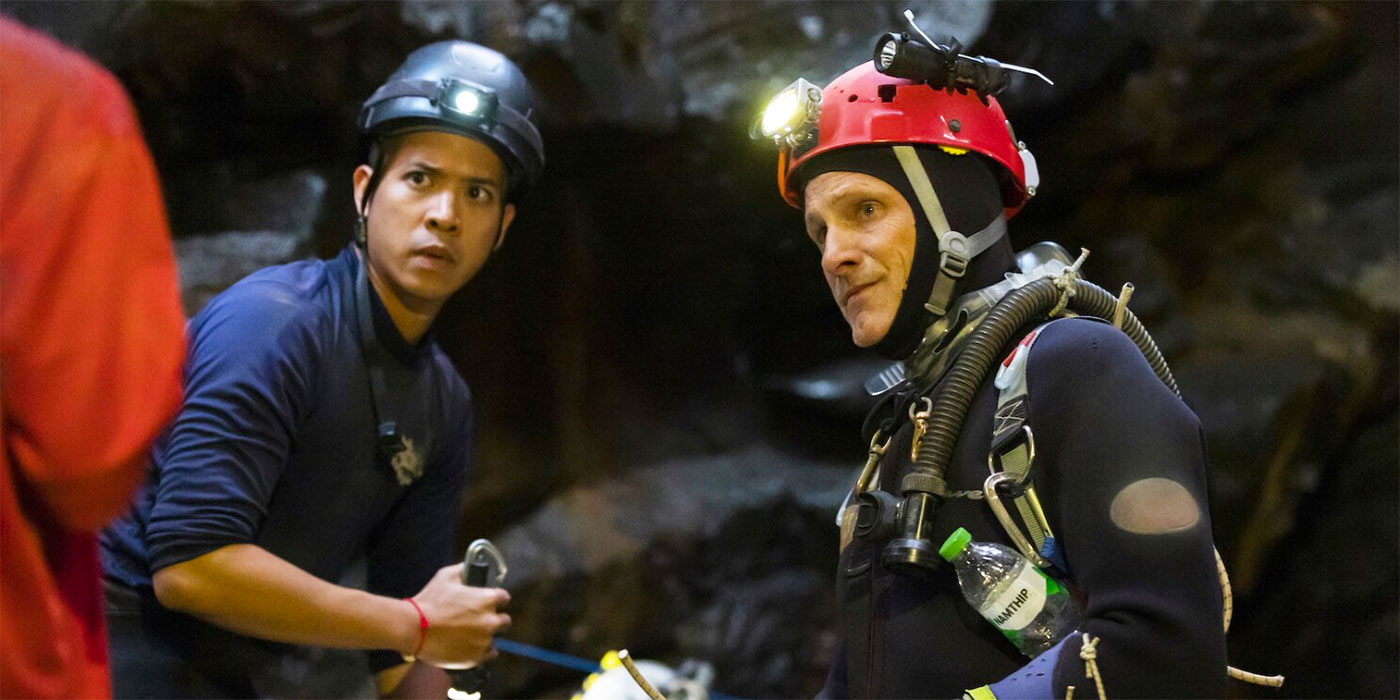
Nerdophiles: Were there any big changes to the script or direction in those notes that you ended up giving to Ron Howard?
Phathanviragoon: I don’t think there were any big changes at all. What I really appreciated from William Nicholson’s script was that there were even a lot of details that I myself didn’t know, because I was living in Thailand when the whole rescue operation was happening. I didn’t even know about the water engineer, Thanet Natisri. I heard that a lot of these tribes and their farms had to be sacrificed to basically try to divert the waters. I knew about that. But I didn’t know that this one man happened to be from Illinois, but he’s Thai, he just took it upon himself to really rally a lot of people on social media to go and help, starting with sandbags. That was Thanet Natisri.
There were just a lot of these details I personally didn’t even know until I read the scripts. I thought that was really quite special. But there are, of course, so many tiny details. For example, just having the governor and also the Navy SEALs talk among each other is already culturally quite specific. Because in Thailand, we don’t necessarily reveal our feelings and emotions, especially to people who are of a different group. So, it’s one of the reasons why we have the character who is basically the Governor’s assistant because she was able to say a lot of things that he may not be able to say.
She’s also the one who’s able to communicate with the parents directly with more empathy because it just wouldn’t make sense for him to say certain things to the others, but she could. So there’s a lot of these kinds of things because, in his position, he just can’t do that. It’s such a Thai-specific thing where certain ranks of people are not really going to express their emotions as easily to others, but he can say it to her, and she can talk about it. It’s just little things like that.
Or the monk is based on a very famous monk called Phra Khuva Boonchum, and Khuva is actually living on the edges of Myanmar. In fact, he doesn’t even live in Thailand, he lives on the Myanmar side. So, when we portrayed him, we made it very clear that these are not Thai monks. They’re not wearing yellow, you’ve noticed that they wear red, which is actually what they wear in Myanmar. And Burmese monks don’t shave their eyebrows. But in Thailand, if you’re a monk, you have to shave your eyebrows. So he had his eyebrows on, just tiny little things like that.
Because it could easily be like, “Oh, we just need a Thai monk.” And you just find somebody in a yellow robe. But that would be completely inaccurate to the film and the actual Khuva, and the beliefs of the people in those tribal areas because they believe in a mix of Buddhism and Animism, which is different from the rest of Thailand. Some of the rituals and things that they say, they worship a lot of these mountains and trees as gods or like princesses and goddesses, including the Doi Nang Non Mountain, which is personified as a princess. There’s a whole legend behind her, and they really believe it in those areas. But these things don’t exist in a lot of the other parts of Thailand.
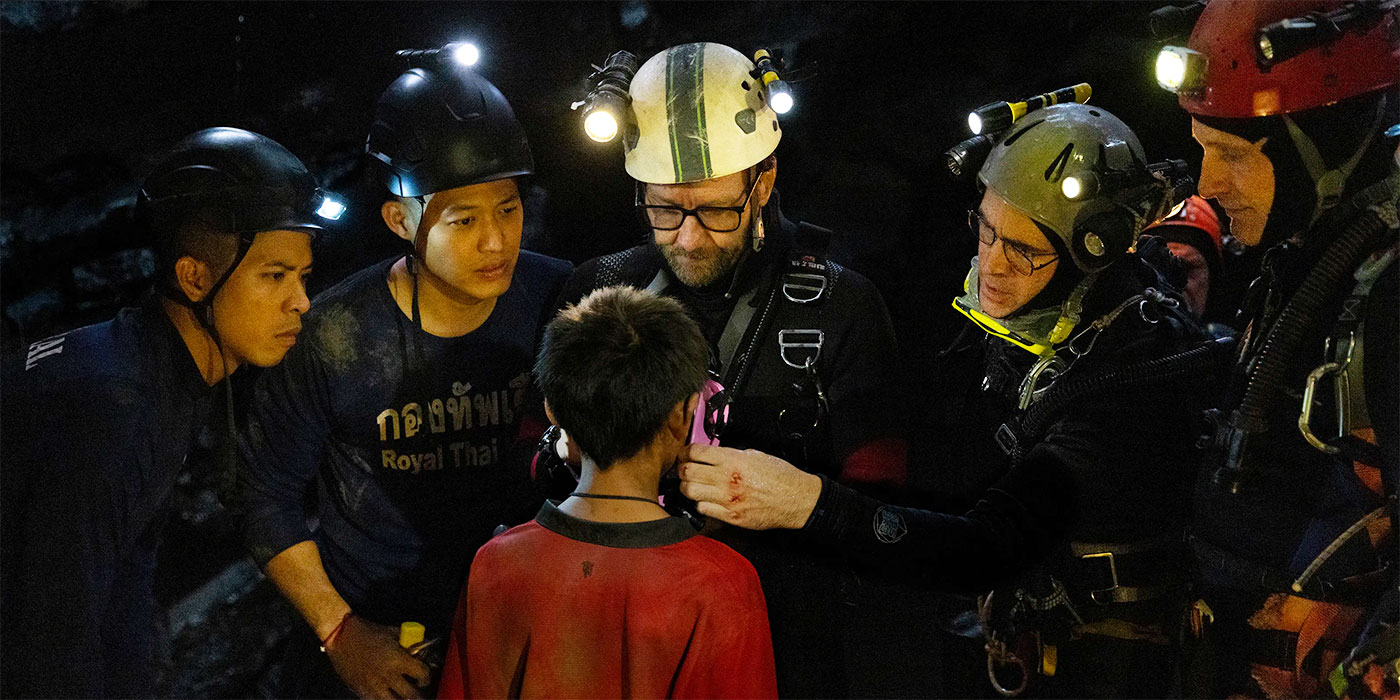
Nerdophiles: And Weir, playing Saman, who was such a heroic figure during the rescue, did you speak with the real Saman’s wife or his comrades in preparation for this role?
“Weir” Sukollawat Kanarot: I haven’t got a chance to talk to his family. But I discussed directly with Ron about the script and the character. And then I practiced on my own and adjusted the [performance] on set with Ron.
Nerdophiles: Gotcha, and how closely did you, Weir, and you, Ploy, work with Ron Howard during this project?
“Ploy” Pattrakorn Tungsupakul: Oh, at first when I knew that I got this role, Ron sent me a greeting email. He’s very kind. He’s very humble. He’s very friendly and he’s down to earth. We had to fly to Australia and had to stay in quarantine for 14 days. We had meetings almost every day to talk to him and discuss the script and character. We created this character together. He’s very open-minded. He always asked me, “Ploy, do you want to put anything in the script?” And, “Do you think the script is correct?” Because, I’m from the northern part of Thailand, and in the northern part, we have our own dialect. So he always checked with me. The script came in the Thai language, I think in general Thai. I had to change it to my own dialect. So, I had to talk to Ron almost every day during quarantine. We worked really closely. And he always asked Thai actors to share their opinions with him and he always listened to our feedback.
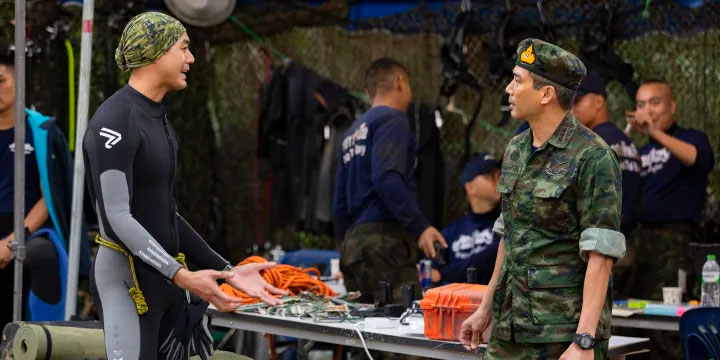
Nerdophiles: And Weir, how did you prepare for the diving aspect of the role? I know it was quite challenging. Did it make you nervous?
Kanarot:* Personally, diving is my favorite hobby. But, I have never dived in caves. It is different from diving in open water compared to diving in caves. So, in order to prepare for the underwater shooting in the cave, I had to do the drill in the real cave, so that I can understand and see the layout. And during the shooting, we also had a professional rescue team on standby there, just in case anything happened. I had to be the one in the scene without a stand-in. On the day of shooting, when Saman passed away, Ron was there by himself. And the most challenging part for me was having to hold my breath for a few minutes during that scene
Nerdophiles: Oh my god, wow! And, Raymond, did you guys film on location? I’ve watched documentaries on this rescue and it looked very similar to the real-life location.
Phathanviragoon: No, actually, we didn’t. The caves themselves are incredibly dangerous. There’s just no way for the safety of our actors and our stunt divers that we could actually do it there. So, we actually had to reconstruct the whole thing in huge tanks, and there are multiples of them. They’re all basically mechanical and hydraulic controlled so that they can create waves that can actually lower and go higher. It was a very, very technical thing to basically recreate those caves. The main reason is because of safety. There’s just no way we could actually shoot in the actual caves. Of course, there was the other problem, because we shot in early 2021 when the pandemic happened. It was just really unfortunate because, during that time, the Thai government came up with a law that says that all film crews cannot be more than 20 people. And you’ve seen the scale of the film; it was just not possible to make a film with just 20 people on set.
So, we had to really make a lot of changes, because we were planning to shoot for quite a while in Thailand. We had to really rejig everything to shoot in Australia because that’s where we’re creating those tanks. They have a lot of expertise there to make a lot of these mechanical things. We just ended up having to extend our shoot in Australia and having to postpone our shoot in Thailand. We did, in the end, go back to Thailand for about two plus weeks to do a lot of pickup shots and to do the scene of the kids on their bicycles going through the fields and all of those are, of course, shot in Thailand. It was really unfortunate that we couldn’t be there for the time that we wanted to really get those scenes natively, but it was just the state of the world. Nothing was going exactly the way that we wanted it to.
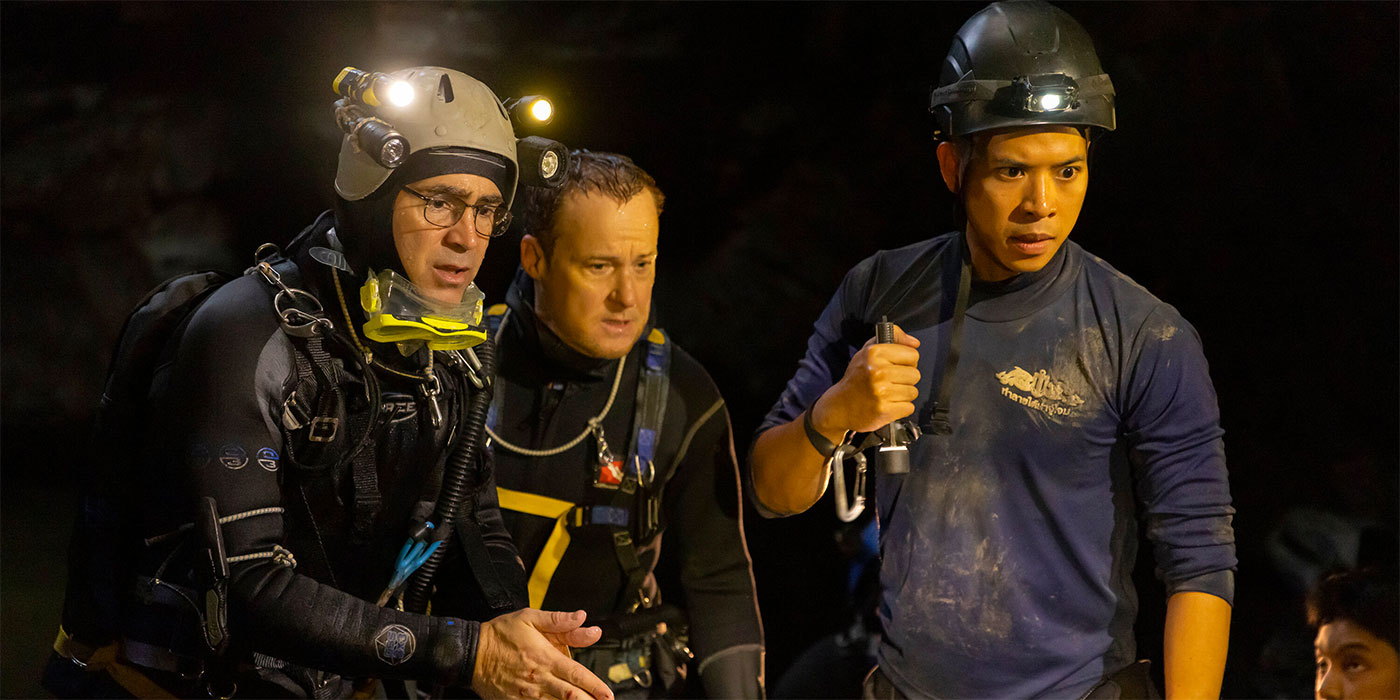
Nerdophiles: Right, of course. But, the recreation is amazing. You guys definitely pulled it off.
Phathanviragoon: Yeah, and that’s really thanks to Molly Hughes, the production designer. And also we have another Thai art director, his name is Lek Chaiyan Chunsuttiwat, and he’s worked on Thai films but also Hollywood films. He’s been working on both sides for a long time. Having a Thai person there helps so much in terms of trying to make sure that everything is authentic. And of course, there’s me, there’s the other co-producer Vorakorn Ruetaivanichkul, and also our director of photography, Sayombhu Mukdeeprom. So there were actually quite a lot of Thai people in the background to try to make sure that things were correct.
Nerdophiles: I think that really paid off. Have the real people the movie is based on seen the film? What were their reactions?
Phathanviragoon: The divers have actually seen the film a couple of times. [When we had our premiere], they were basically all here. And in fact, when we were shooting, both Rick Stanton and Jason Mallinson were present for most of the shoots, especially Rick. He made sure that not only was it accurate, but he was even going into the water in our tanks himself and showing the actors how they would do it. I think you’ve probably noticed that we use extremely little stunts in the water because you can really tell those are like Viggo [Mortensen], Colin [Farrell], Joel [Edgerton], Paul Gleeson, and Tom Bateman. It was really them in the water performing those things.
It’s really to the credit of Rick and Jason for teaching them how to do it correctly and to make sure that this is actually safe for the actors to do these stunts. Because even for me, when I saw those caves inside the tanks, I got really nervous because they were tiny – you just barely fit in. I’m claustrophobic, so I looked at that and was like, “Nope!” I was so surprised when the actors said, “No, we’re gonna do it.” And, in fact, one of our stunt divers actually panicked at one point, he was safe, there was nothing wrong, but he just got panicked going through the holes and it just shows if being in a very controlled environment like a tank, people are still getting very nervous, imagine the people who actually did it for literal kilometers in the cave in the darkness. Not even knowing what’s next. It’s just incomprehensible in many ways things actually happened with so few casualties and all the kids being rescued.
And, in terms of the others. Our Thai premiere was on August 4, so the Thai side hadn’t seen it yet. So a lot of our Thai cast went back for that premiere.
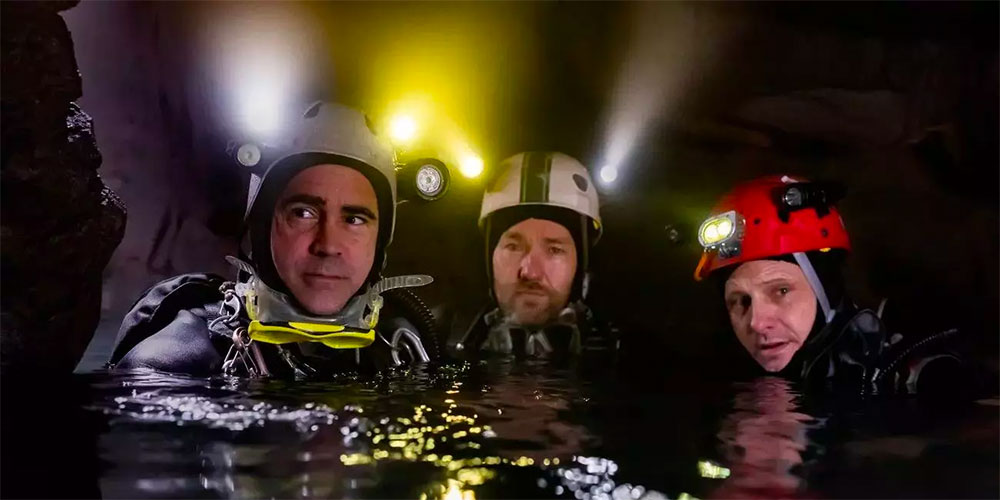
Nerdophiles: Exciting! And speaking of Rick Stanton and Jason Mallinson, did the actors actually train with their real-life counterparts? There aren’t many people who are skilled in this type of cave diving in the world who can advise on it.
Phathanviragoon: Yeah, yeah, definitely. In fact, when Viggo was talking to Rick, he actually went to, I think, somewhere in Spain, to go to an actual cave with some of the experts that Rick had introduced him to. They actually went into some of those caves as well. So, it’s really a credit to Viggo and the others, who really, really were like, “Hey, this is part of our character. Diving is extremely important because that’s what we do. And we want to try to do it ourselves.” Viggo was the first, he was like, “No, I want to do this all by myself,” and of course, if he does it, the other actors are like, “Well, I want to do it too.” So everybody then did it. It’s really fantastic, because obviously, in terms of the film itself, it’s so much more authentic that you can actually see very clearly in most of the shots that it’s them, unless, of course, the scenes are dark or something, but it’s really them. We didn’t have stunts or anything.
And it’s not only just Viggo, Colin, Joel, and the others, but also the Thai actor who played Saman, Weir [Sukollawat Kanarot]. He did his scenes himself too in a tank. So I don’t think I could do it, but he did a really fantastic job, especially with Weir, because he had to play that very, very tragic death scene of Saman. He did it super well.
Thirteen Lives is now streaming on Prime Video.
* Denotes response via translator. This interview has been edited for clarity.